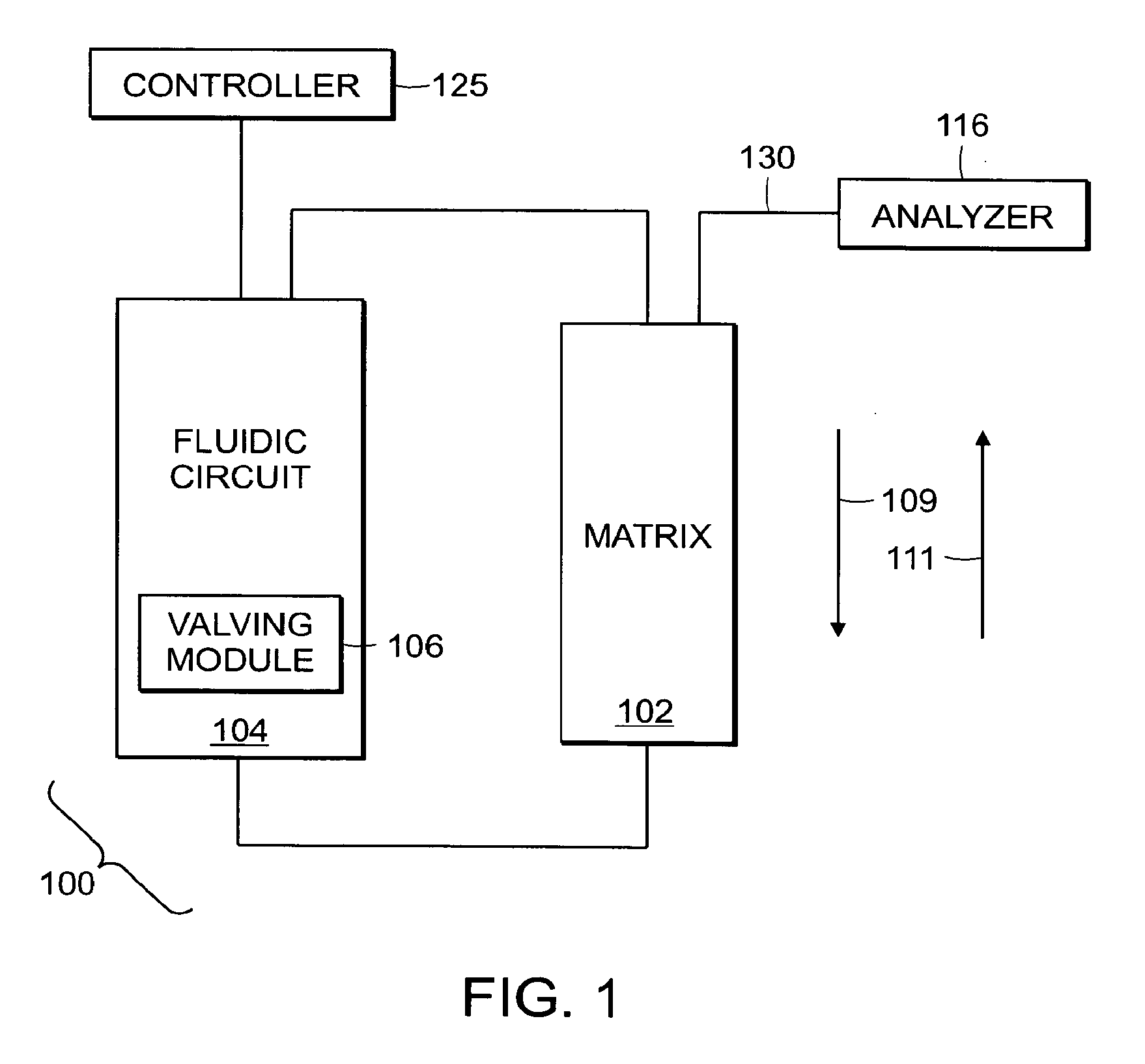Systems and methods for high-throughput screening of fluidic samples
a fluidic sample and high-throughput technology, applied in the field of drug discovery, can solve the problems of inability to obtain the radioisotope of the test compound of interest, certain limitations, and the approach of sample ionization not working well for samples, so as to facilitate continuous flow and high throughput screening
- Summary
- Abstract
- Description
- Claims
- Application Information
AI Technical Summary
Benefits of technology
Problems solved by technology
Method used
Image
Examples
example 1
Drug-Drug Interaction (DDI) Assay
[0084]Many xenobiotic compounds are metabolized in vivo by a family of enzymes known as cytochrome P450s, primarily in the liver. The metabolic activity by P450 enzyme also includes a vast majority of small molecule pharmaceuticals. Since the therapeutic activity of many pharmaceutically active compounds is highly dose-dependent it is advantageous to understand the metabolic fate of these chemicals. In many cases, high doses of certain chemicals can be toxic or have long-term deleterious effects.
[0085]Many compounds are known to affect the metabolism of certain P450 enzymes, either acting as inhibitors or activators. This is true for a range of chemicals that are currently used as therapeutics. It is critical to know from a drug-safety standpoint whether or not the metabolic profile of a pharmaceutical compound taken by an individual may be affected by other chemicals that individual may be taking. If an individual is currently taking a certain drug ...
example 2
[0095]In accordance with various embodiments of the invention, certain attributes of the system may be advantageously enhanced at the expense of throughput. An example of such an application is the metabolic stability assay. The metabolic stability assay assesses the activity of liver enzymes on a test molecule. It is typically an in vitro assay performed by incubating a sub-cellular liver preparation (e.g. liver microsomes or S9 fraction) with a source of energy (e.g. NADPH) and the test compound in an appropriate buffer system. The liver enzymes may metabolize the test compound, the rate of which can be determined by quantifying the amount of the test compound at controlled times using mass spectrometry.
[0096]This assay is different from the DDI assay in that each and every test compound must be monitored in the mass spectrometer. In the DDI assay, only a specific set of probes needed to be monitored allowing for a full optimization of the system. Given th...
example 3
Compound Purity Testing
[0103]In some applications, the samples to be analyzed are already in a buffer that is compatible with mass spectrometry. Such an application may be the quality control analysis of test compounds in an aqueous or organic buffer that can directly be sprayed in to an API source without the need for any purification. Various aspects of the above-described embodiments can be used to increase the sample throughput for such an application.
[0104]In this application only a single injection valve is used. An aliquot of sample is aspirated into the injection loop and upon actuation of that valve the sample is sprayed directly in to the mass spectrometer. The flow from a single fluidic pump is used to push the sample through the injection loop and into the inlet of the mass spectrometer. In preferred embodiments of the invention, the fluid used to push the sample on to the mass spectrometer is one that the analytes are highly soluble in and provides good ionization in th...
PUM
| Property | Measurement | Unit |
|---|---|---|
| Fraction | aaaaa | aaaaa |
| Pressure | aaaaa | aaaaa |
| Flow rate | aaaaa | aaaaa |
Abstract
Description
Claims
Application Information
 Login to View More
Login to View More - R&D
- Intellectual Property
- Life Sciences
- Materials
- Tech Scout
- Unparalleled Data Quality
- Higher Quality Content
- 60% Fewer Hallucinations
Browse by: Latest US Patents, China's latest patents, Technical Efficacy Thesaurus, Application Domain, Technology Topic, Popular Technical Reports.
© 2025 PatSnap. All rights reserved.Legal|Privacy policy|Modern Slavery Act Transparency Statement|Sitemap|About US| Contact US: help@patsnap.com



